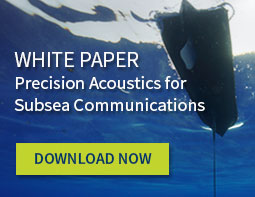Partnerships to Help Protect and Sustain the World’s Marine Sanctuaries
Liquid Robotics — October 25, 2017
Over the past month, Liquid Robotics has been honored to join two global leaders in the fight to protect and sustainably manage our marine sanctuaries and ecosystems. In collaboration with the Australian Institute of Marine Science (AIMS) and separately with NOAA’s Office of National Marine Sanctuaries, Wave Gliders are helping scientists gain new insights into the true health and conditions of their vulnerable marine sanctuaries.
Putting Eyes on the Great Barrier Reef
Partnership between Boeing Australia and the Australian Institute of Marine Science (AIMS)
Once you’ve experienced the beauty of coral reefs or snorkeled with schools of colorful tropical fish, you instantly understand why there’s an intense passion to protect and preserve these vulnerable marine treasures. Sadly, as a result of the increase in ocean temperatures, and illegal poaching of endangered species, many of the world’s most prized coral reefs and ecosystems are suffering and dying. The most notable is the Great Barrier Reef (GBR) in Australia where major bleaching events over the past two years are leaving portions of the reef dead.
To better understand the conditions affecting the GBR, AIMS scientists in collaboration with The Boeing Company and Liquid Robotics deployed a Wave Glider to conduct a health check-up of the GBR. Covering over 200 nautical miles on a 7-day environmental monitoring mission, the Wave Glider provided scientists real-time data reporting on the weather, currents, waves, chlorophyll fluorescence, turbidity and the dynamic conditions affecting the GBR.
During this mission, AIMS scientists specifically noted the flexibility of data collection and multi-processing capabilities of the Wave Glider:
- Real time, sensor configuration. During the mission, scientists were able to reconfigure the Acoustic Doppler Current Profiler (ADCP) sensor for bottom tracking, while still performing currents profiling. This enabled simultaneous collection of bathymetry measurements (depth of ocean) to provide precision profiles with waves measurement.
- Flexibility of data analysis and reporting. With the Wave Glider’s real-time reporting capabilities, scientists were able to perform offline analysis of the mission data to adjust the waves reporting technique. This enabled the scientists to re-process algorithms parameters in real time to enable better alignment with the buoys in region.
“We are impressed with the number of different measurements it could conduct at the same time and its ability to transmit the data back to our base immediately and reliably while navigating and performing its mission,” AIMS head of Data and Technology Innovation, Dr. Lyndon Llewellyn said.
Dr. Llewellyn commented that this technology will allow scientists to measure atmosphere and water over long periods of time because the Wave Glider can operate at sea for many months while following a programmed course or being piloted remotely.
Collaboration to Protect Vulnerable Marine Sanctuaries
Partnership with NOAA’s Office of National Marine Sanctuaries (ONMS)
Imagine having the responsibility to protect a network of underwater parks encompassing more than 600,000 square miles of marine and Great Lakes waters from Washington state to the Florida Keys, and from Lake Huron to American Samoa; an expanse that also includes a system of 13 national marine sanctuaries and Papahānaumokuākea and Rose Atoll marine national monuments? This is the job description for NOAA’s Office of National Marine Sanctuaries (ONMS).
Tasked with this critical responsibility, NOAA ONMS requires the most advanced and innovative technologies to help safeguard these national treasures. To this end, Liquid Robotics and ONMS announced a multi-year agreement to develop solutions for long-term environmental monitoring and surveillance of the Pacific’s most diverse and endangered underwater ecosystems. This partnership will help address the critical long-term monitoring and scientific data collection gaps that are not economically feasible with traditional research assets.
Using Wave Gliders as the core technology, NOAA’s ONMS scientists will enhance their ability to assess and evaluate the increasing threats posed by:
- Illegal, unreported and unregulated fishing (IUU)
- Water quality and marine debris
- Coral reef damage and bleaching
- Climate change
Allen Tom, Regional Director, ONMS Pacific Islands Regional Director stated, “Utilizing the latest technology in marine sciences helps us protect some of the older marine ecosystems in the world—a truly groundbreaking opportunity for ONMS and Liquid Robotics.”
Protecting These Ecosystems is Core to Liquid Robotics
One of our core cultural tenets and the reason why people love to work here is the ability to do something big; something that makes a real difference. Rarely in one’s career can you find a technology or service that has a chance to change the world. We believe we have this opportunity.
Our genesis was to create an environmentally-friendly ocean robot to listen and capture the singing of humpback whales. Fast forward a decade and this commitment to understanding and protecting the ocean remains. Partnerships with AIMS and NOAA ONMS are vital to achieving this goal.
